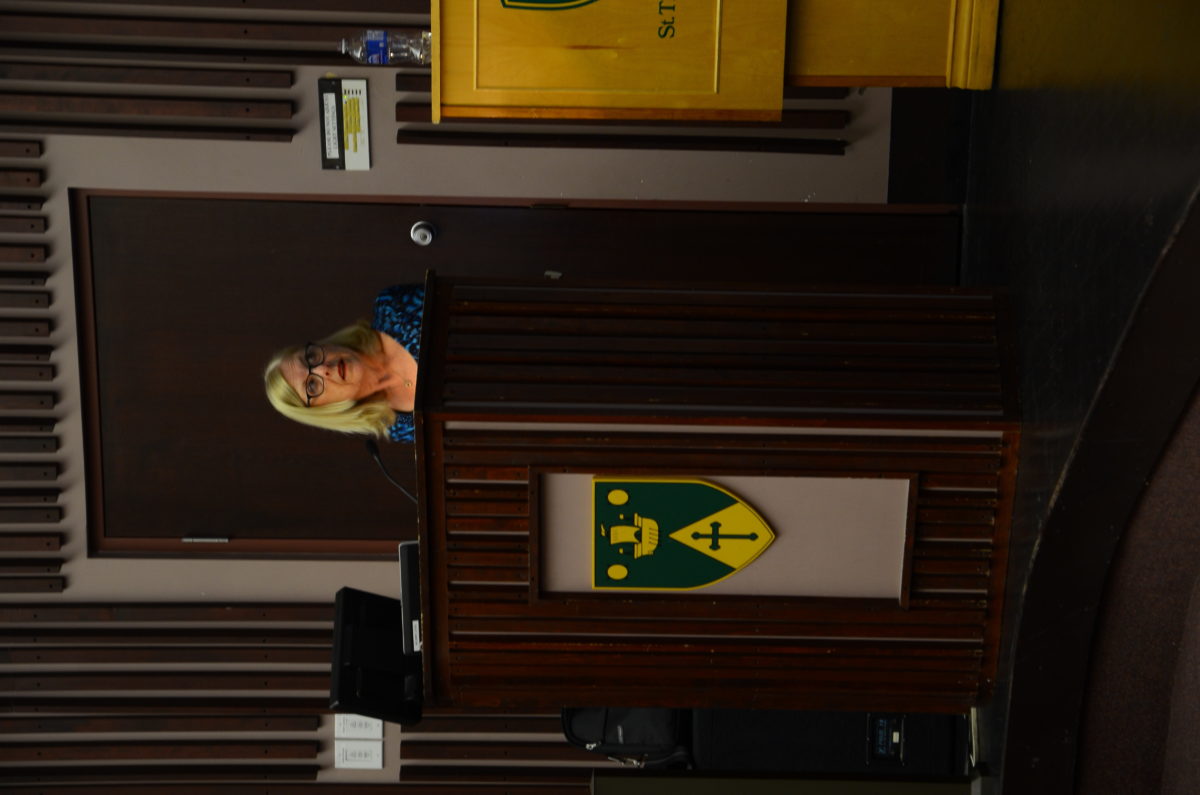
Questions were raised regarding the future of journalism during Thursday night’s Irving Chair in Journalism lecture, delivered by visiting journalist Ros Guggi. Among them, whether the future of news consumption will be catered to suit individual bias and if it will get lost in photos of macaroni and cheese.
Rest assured, the later is unlikely. But, “I have no doubt that we will see more newspapers fold in the future… It is a time of great experimentation and upheaval” said Guggi.
Guggi is an award-winning journalist and editor with over 40 years of experience in reporting across Canada. Her lecture focused on the shifting news business and what the coming technological changes will mean for consumers and future journalists.
But she also emphasized that the new generation of journalists can better engage audiences by using technology effectively.
She said for tomorrow’s journalists this means they need to master how to deliver content on a small screen and make it quickly digestible for people on the move.
The changes in a more technologically based journalism are already occurring at STU. Hours before the lecture, the journalism program was officially renamed to Digital Journalism and New Media.
“The future is visual and video… We are at the brick-size cellphone age of virtual reality,” Guggi said. With 360 degree video and virtual reality in the form of google glasses, the era of digital journalism is already in motion.
Her lecture comes amid crumbling newspapers and slashed journalism jobs. Last month, Postmedia announced it would cut 90 jobs and merge its Vancouver, Edmonton, Calgary and Ottawa newsrooms. Consumers and journalists alike remain concerned about a lack of quality journalism if jobs continue to be cut.
An audience member asked if the future of journalism would be in the photos of macaroni and cheese and the revealing pictures of Kim Kardashian that he sees on his Facebook feed.
To this, host of CBC New Brunswick news and member of the audience, Harry Forestell, responded.
“The problem with your observation is that the world as you see it is contained by the front page and the back page of the newspaper you’re reading. The world as we see it is not contained by anything other than my capacity to find what I’m looking for when I’m interested in it. This is the universe,” said Forestell, holding up his cellphone.
Last year, nine media organizations began publishing their content onto Facebook through a program called Instant Articles, which delivers fast-loading content to a Facebook audience of over one billion. Last week, Facebook opened the platform to all news agencies. Apple, Twitter and Snapchat have also launched platforms for news and forged partnerships with media companies.
“There’s nothing transparent about these platforms, but you don’t have much of an option but to embrace them if you want to reach an audience and remain relevant,” said Guggi, quoting journalist Emily Bell.
Facebook uses algorithms to make you feel good or bad by controlling what shows up in your newsfeed— manipulating your emotions to make you stay there longer. Guggi called the current era the Starbuckization of news, in which new publishing platforms, like Facebook, cater to your tastes.
“Beware of that cat video. It may not be as cuddly as it appears,” Guggi warned.
However, journalists will always have a duty to deliver accurate and relevant material to the public. Without journalism, readers wouldn’t have known about this lecture. Nor would they have known the truth about countless other events that may directly or indirectly impact their life.
“We will always need people who shine a spotlight into corners people would rather have stayed dark,” said Guggi.

